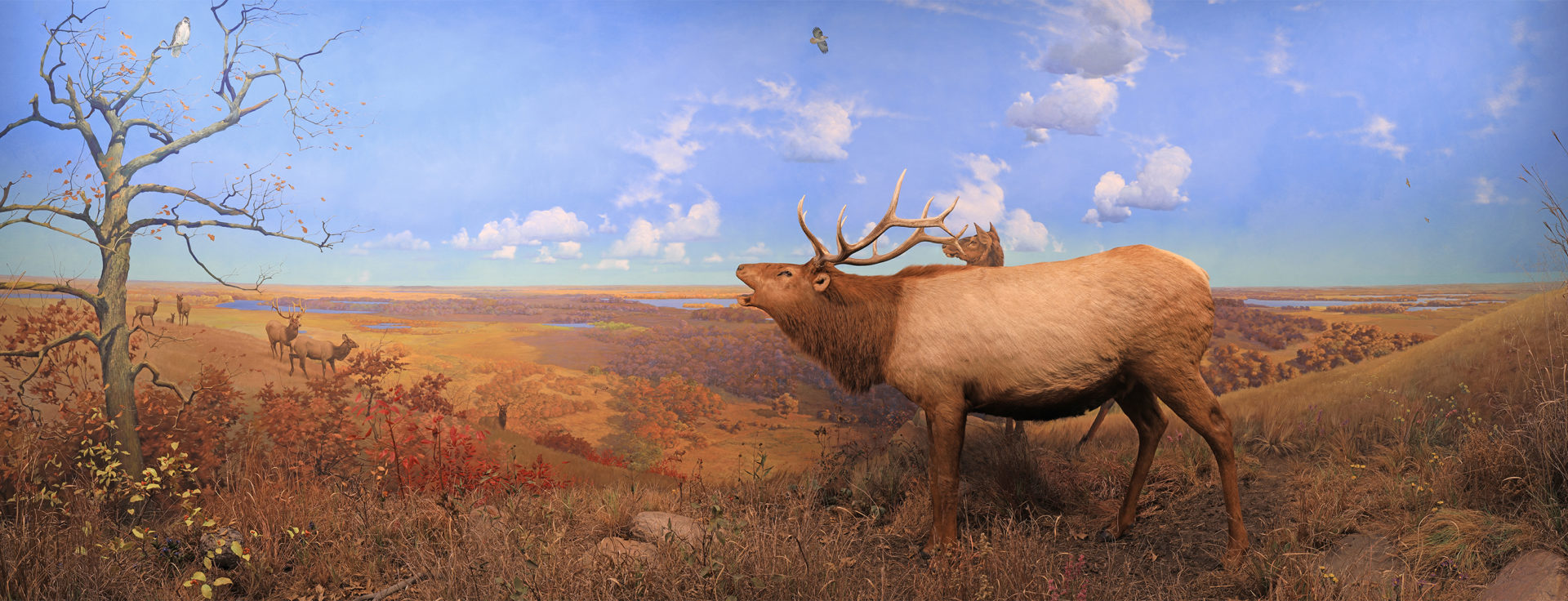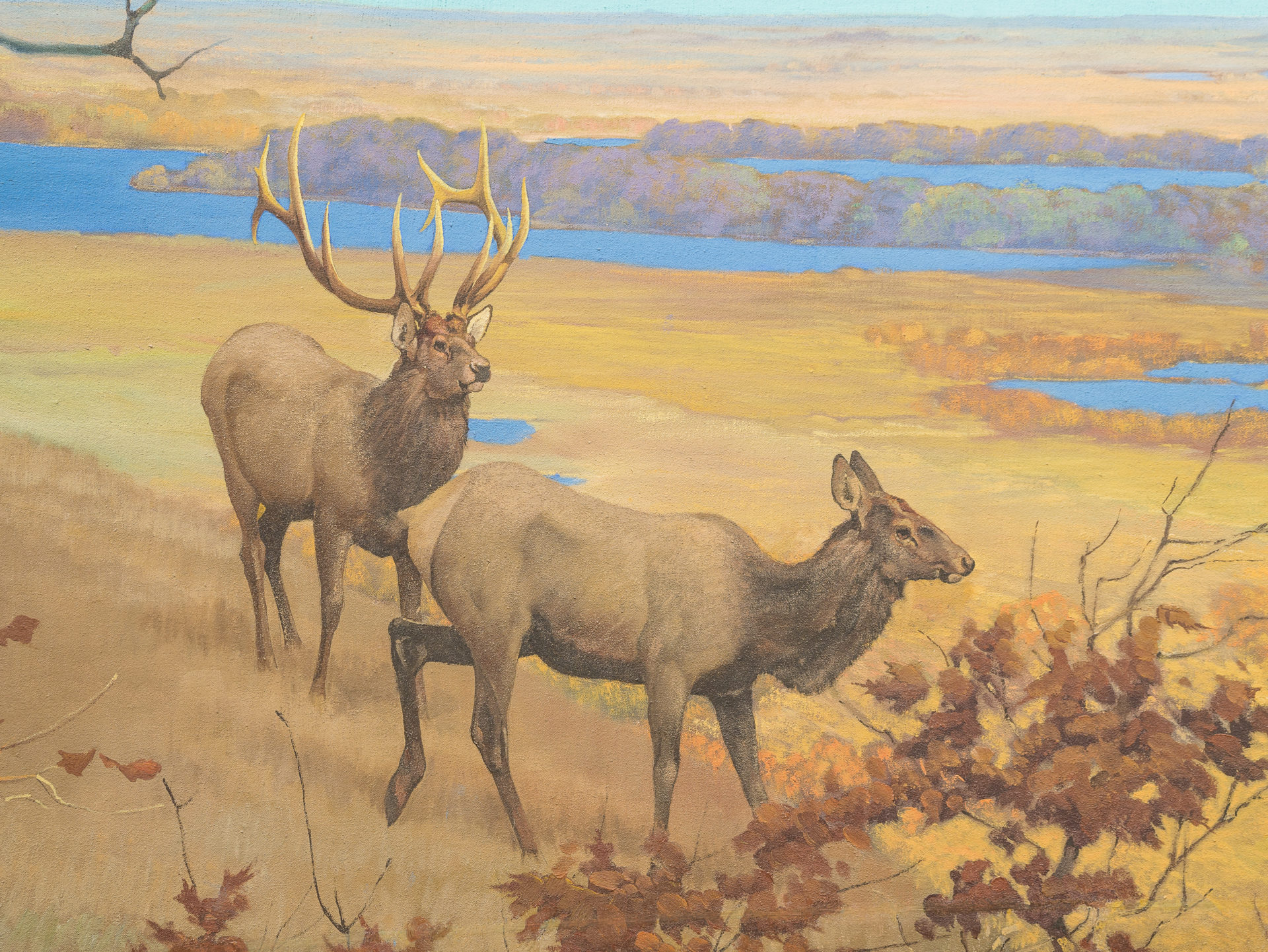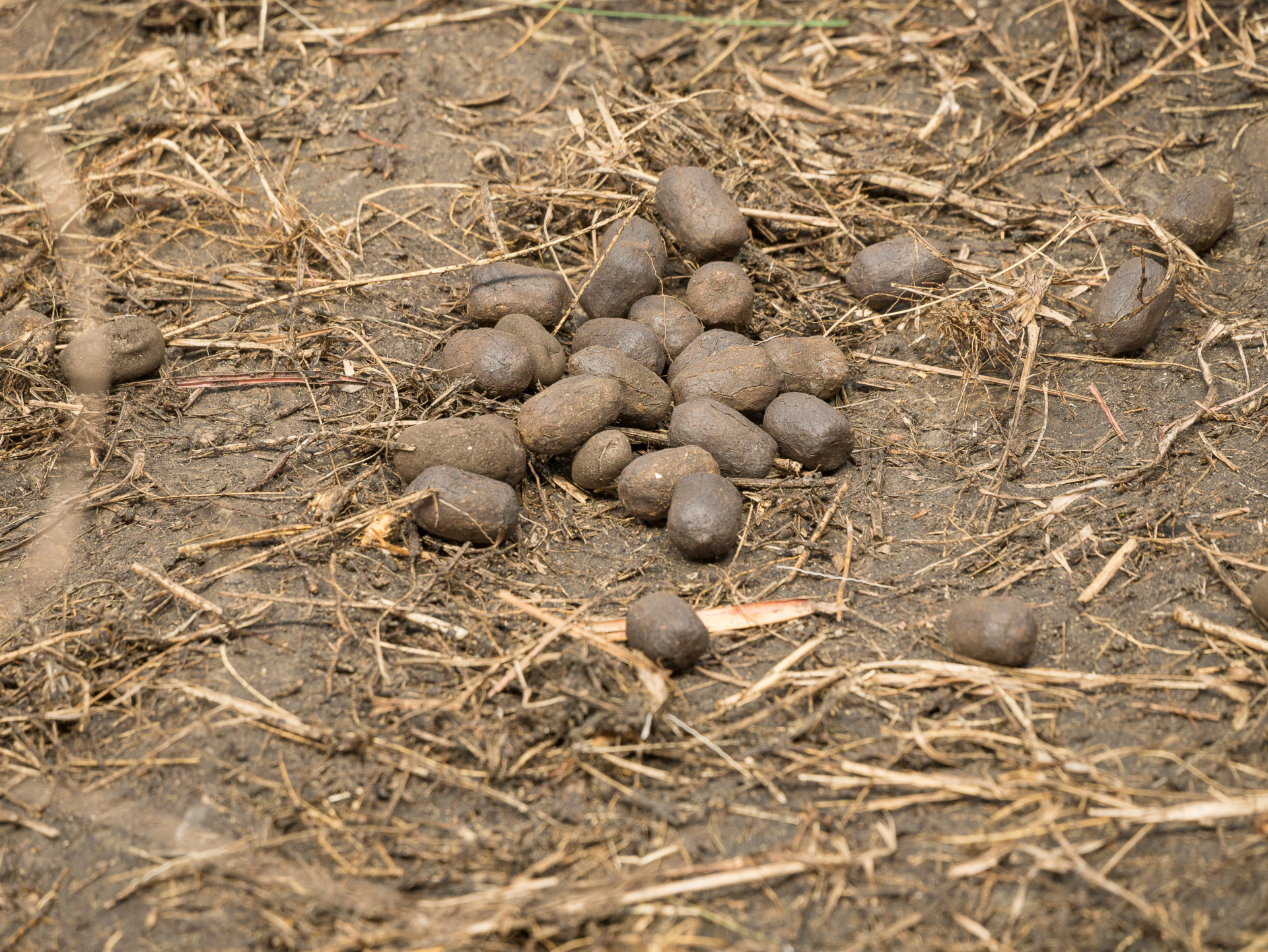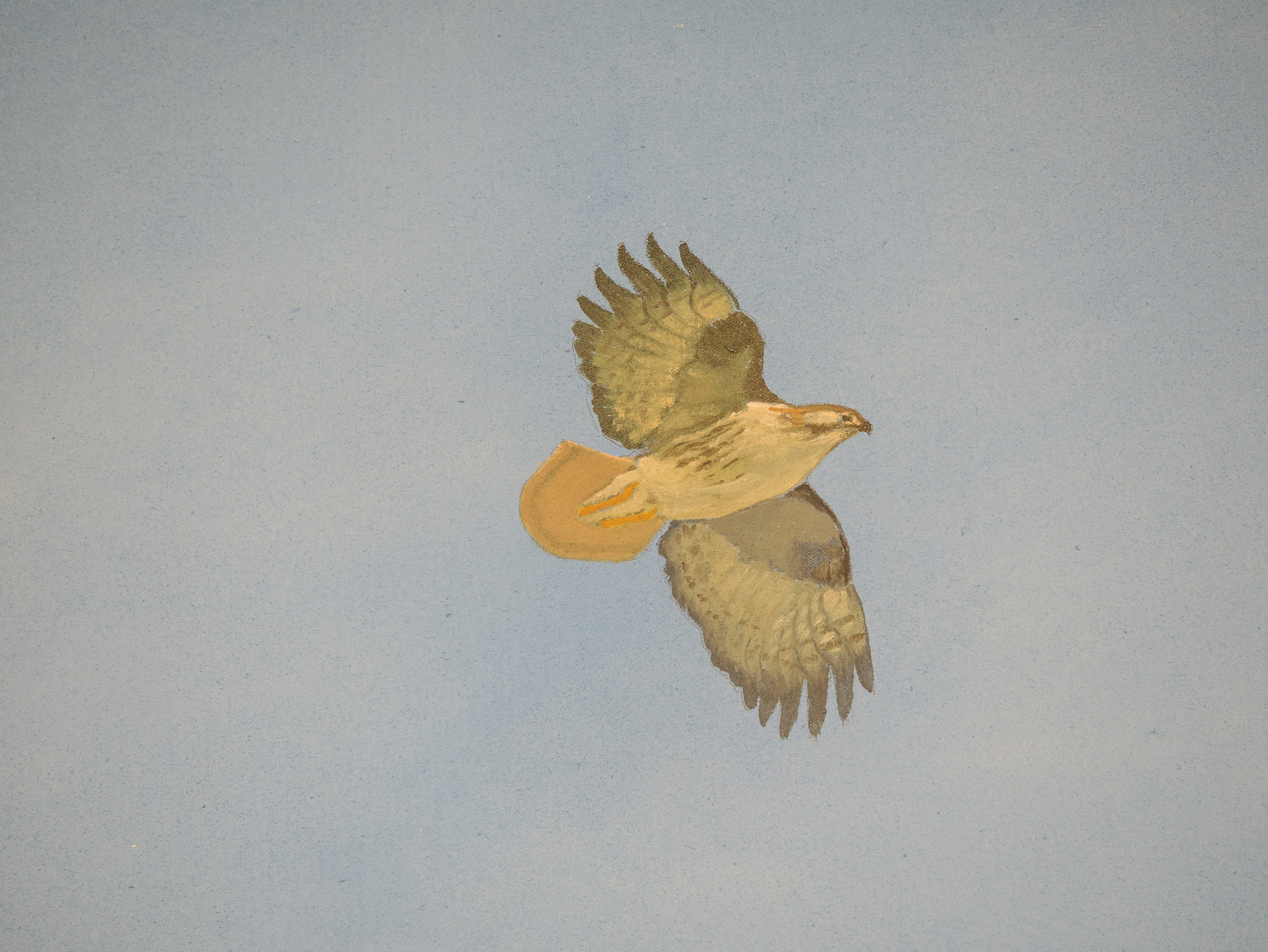
Diorama Spotlight: Elk at Inspiration Point
Published09/29/2020 , by Adam Hartman, gallery programs assistant
Nestled among the Leaf Hills in Ottertail County, Inspiration Peak overlooks the open, oak savanna of western Minnesota. The Leaf Hills are a series of glacial moraines—mounds of rock and sediment built up by glacial movement left behind by Minnesota’s glaciers nearly 11,000 years ago.
Elk at Inspiration Peak is one of only two large dioramas at the Bell Museum to depict an autumn scene. The background, painted by Francis Lee Jaques in 1946, showcases the auburn, crimson, and amber leaves of the oak savanna from a unique perspective—above the landscape. Jaques’ painting extends the scene not only away from viewers, but beneath them, giving the entire scene greater depth and immensity.
Jaques’ brilliance is also showcased in his depiction of wildlife. The diorama depicts 14 elk and 5 red-tailed hawks, but with the exception of the taxidermied bull elk in the foreground, all were painted by Jaques. Each painted animal is carefully detailed, no matter its distance from the foreground. Even the most distant elk and hawks were painted with beautifully realistic detail (unlike those v-shaped birds we’ve all used to fill the skies of our own drawings).
Autumn is a transitional season when many plants and animals enter into a period of dormancy, and even those that remain active throughout the cold winter slow down and rest. Trees shed their leaves, birds migrate south, and many species bury themselves underground until spring. It’s a period of relative inactivity that is still full of life, if you know where to look for it, and that life is perfectly depicted here.

These elk are in the middle of their fall rut, when males fight for the right to breed with a harem, or group of females. While the fall rut is considered the elk’s mating season, a bull elk’s entire year is devoted to preparing for this time, unlike other species that begin preparations in the month or two leading up to their respective breeding seasons.
Every spring, a new set of antlers begins to grow beneath a thin layer of skin and velvet. This velvet is full of blood vessels that feed the bone underneath as the antler grows throughout the summer. As the rut begins, the velvet is shed, and the sharp, bony antlers beneath are exposed. Males wrestle with one another for control of a harem, locking antlers until one male forfeits, or is too injured to continue. The victor must then defend the harem from predators and other males until the rut has ended. In late winter each male’s antlers are shed, and in the spring a new pair will begin to grow again.
There’s more to see at Inspiration Peak than the elk rut. The foreground, constructed by John Jarosz and Walter Breckenridge, contains models of many common prairie species. Among them are a few late-blooming wildflowers. Downy gentian, purple coneflower, and silky aster dot the dry prairie grasses with flecks of purple, and the slope to the right is spotted with yellow hairy false golden asters.
A number of invertebrates populate the prairie foliage as well. Two butterflies, a monarch and a southern dogface (sulphur butterfly), rest in the dry grass, likely on their way to their southern wintering grounds. Built beneath the bright green leaves and orange berries of the American bittersweet, a bald-faced hornet nest subsides with the cold. Only this year’s new queens will survive the winter. The rest of the colony will die in the fall, and the following spring the queens will emerge to establish new colonies on their own.
Instead of the activity of new growth and migratory arrivals featured in many spring dioramas, Elk at Inspiration Peak feels relaxed and personal. Though this diorama is static, it depicts a time and energy that many of us are familiar with (though our experiences are likely elk-free). The warm colors, cool breeze, and rustling leaves of autumn are comforting for many because, like the plants and animals depicted here, we too are entering a period of relative dormancy as winter approaches.
Location: Inspiration Peak, Leaf Hills Glacial Moraine in Ottertail County, Minnesota.
Site Protected on Public Land: Inspiration Peak State Wayside, a small park managed by MN DNR
Date depicted: mid-1800s (before European settlement and farming)
Date completed: 1948 (painted in 1946)
Dimensions: 10’ x 22’
Background Artist: Francis Lee Jaques
Foreground Artist: John Jarosz and Walter Breckenridge
Season: After first fall frost
Donors: Founding Donor – Putnam Dana McMillan; Donors of 2018 Restoration – Diorama Legacy Society
Restoration 2017: Midwest Art Conservation Center, Chase Studios, Museum Professionals, Split Rock Studios









